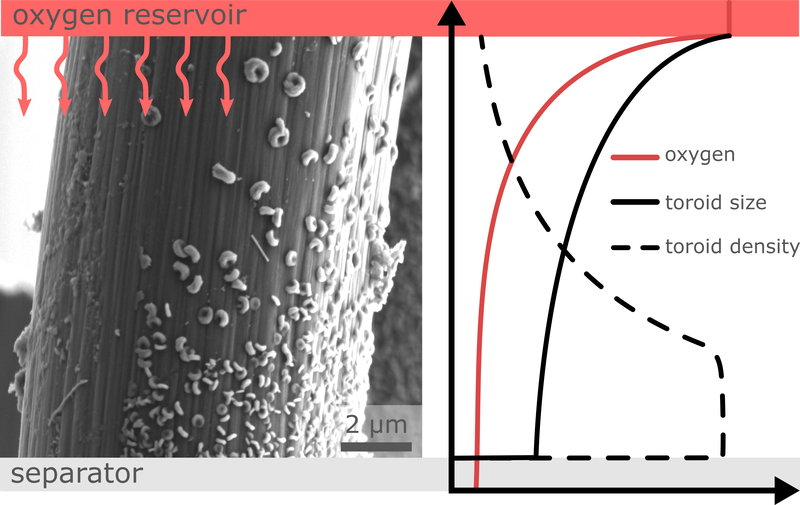RG Dr. Daniel Schröder
Welcome to the website of the junior research group Dr. Daniel Schröder!
- Current notice
-
From April 1st, 2021 we are located at TU Braunschweig: https://www.tu-braunschweig.de/ines/
- Selected results
July 2019
Rechargeable metal-oxygen batteries are considered as a potential technology in future energy storage systems. Alkali metal-oxygen batteries, such as lithium-oxygen batteries, are in particular focus of industry and research due to their high theoretical energy density. The lithium peroxide formed during discharge precipitates as a solid on the cathode structure, so the cathode design and understanding of the growth mechanism play a crucial role in achieving maximum energy densities. For this reason, the BMBF-project MeLuBatt – in close cooperation with the Institute for Energy and Systems Engineering (InES) at TU Braunschweig and the Fraunhofer Institute for Manufacturing Technology and Applied Materials Research (IFAM) in Oldenburg – is currently investigating the growth behaviour of the discharge product in the cathode of lithium oxygen batteries. The SEM image shows the magnification of a carbon fiber on which toroid-like Li2O2 particles have been formed. The size and particle density of these toroids strongly depends on the availability of dissolved oxygen in the electrolyte: With more dissolved oxygen (cathode side facing the O2 reservoir), fewer but significantly larger toroids are formed, while deeper in the electrolyte (cathode facing the separator side) the toroids are smaller, but grow in a higher density. The diagram schematically illustrates how the size and density of the toroids depend on the dissolved O2 in the electrolyte along a carbon fiber. (Picture submitted by Julian Kreißl, Daniel Langsdorf and Daniel Schröder).

